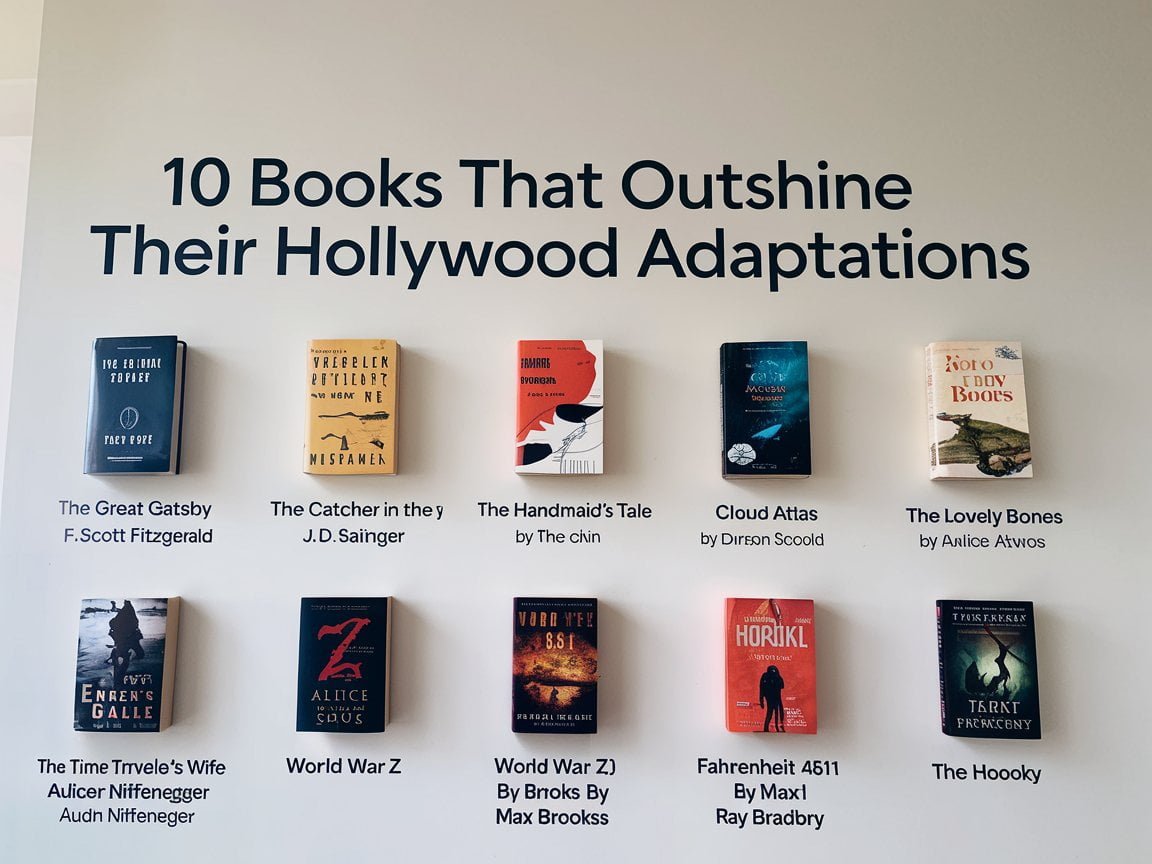In the ever-evolving landscape of entertainment, the adaptation of beloved books into Hollywood films has become a common practice. While some adaptations manage to capture the essence of their source material, many fall short of the magic found within the pages of the original books. This article explores ten remarkable books that, despite their silver-screen counterparts, continue to outshine their Hollywood adaptations.
List Of The Books
- 1. "The Great Gatsby" by F. Scott Fitzgerald
- 2. "The Catcher in the Rye" by J.D. Salinger
- 3. "The Handmaid's Tale" by Margaret Atwood
- 4. "Cloud Atlas" by David Mitchell
- 5. "The Lovely Bones" by Alice Sebold
- 6. "Ender's Game" by Orson Scott Card
- 7. "The Time Traveler's Wife" by Audrey Niffenegger
- 8. "World War Z" by Max Brooks
- 9. "Fahrenheit 451" by Ray Bradbury
- 10. "The Hobbit" by J.R.R. Tolkien
1. “The Great Gatsby” by F. Scott Fitzgerald

F. Scott Fitzgerald’s masterpiece, “The Great Gatsby,” has seen multiple film adaptations over the years, including the star-studded 2013 version directed by Baz Luhrmann. However, none have fully captured the nuanced critique of the American Dream and the subtle characterizations that make the novel a timeless classic.
Why the book is better:
- Fitzgerald’s lyrical prose creates a vivid atmosphere that’s hard to replicate on screen.
- The book’s first-person narration by Nick Carraway provides intimate insights into the character’s motivations and the era’s social dynamics.
- The novel’s themes of disillusionment and the hollowness of wealth are more powerfully conveyed through Fitzgerald’s carefully crafted sentences.
Key differences:
- The 2013 film’s flashy visuals and modern soundtrack, while entertaining, often overshadow the story’s deeper meanings.
- The movie struggles to convey the book’s subtle symbolism, such as the green light and the eyes of Dr. T.J. Eckleburg.
2. “The Catcher in the Rye” by J.D. Salinger
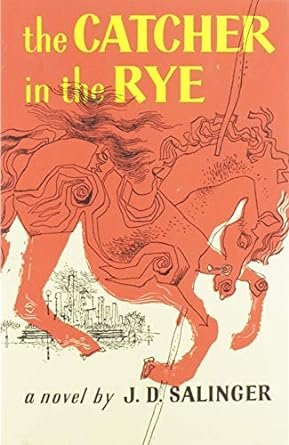
J.D. Salinger’s “The Catcher in the Rye” has never been officially adapted into a film, largely due to the author’s reluctance to sell the rights. This absence of a Hollywood adaptation speaks volumes about the book’s unique voice and narrative style, which many believe would be impossible to translate effectively to the screen.
Why the book is better:
- The novel’s stream-of-consciousness style allows readers to intimately experience Holden Caulfield’s thoughts and emotions.
- Salinger’s masterful use of colloquial language creates an authentic and relatable teenage voice.
- The book’s themes of alienation and the loss of innocence resonate deeply with readers in a way that might be lost in a visual medium.
Key differences:
- Without a film adaptation, the book retains its mystique and allows readers to form their visual interpretations of the characters and settings.
3. “The Handmaid’s Tale” by Margaret Atwood
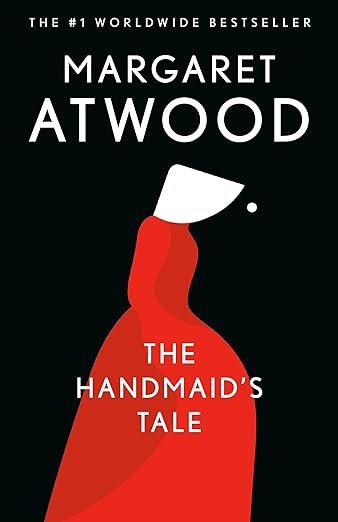
While the television series adaptation of “The Handmaid’s Tale” has gained critical acclaim, Margaret Atwood’s original novel still stands as a superior work of dystopian fiction. The book’s power lies in its ability to leave certain aspects to the reader’s imagination, creating a more personalized and often terrifying experience.
Why the book is better:
- Atwood’s prose is haunting and poetic, creating an atmosphere of oppression and fear that’s uniquely literary.
- The novel’s ambiguous ending allows readers to contemplate the fate of Offred and the society of Gilead.
- The book’s first-person narration provides a more intimate look into the protagonist’s psyche and her struggle to maintain her identity.
Key differences:
- The TV series expands the world beyond the novel’s scope, which can dilute the focused narrative of Atwood’s work.
- The visual nature of the show sometimes makes explicit what the book leaves to the imagination, potentially reducing the psychological impact.
4. “Cloud Atlas” by David Mitchell
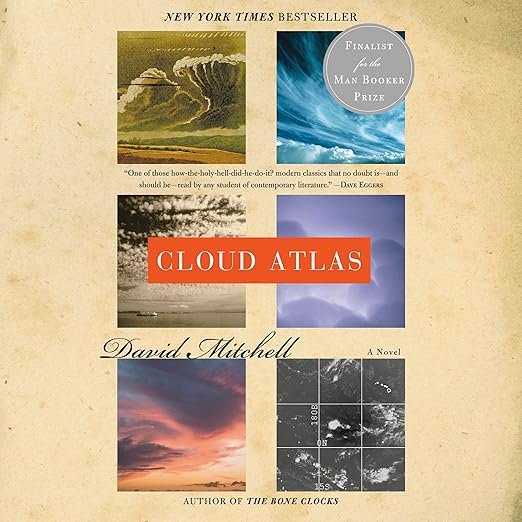
David Mitchell’s “Cloud Atlas” is a complex, interwoven narrative spanning six different time periods and styles. While the 2012 film adaptation, directed by the Wachowskis and Tom Tykwer, was ambitious, it struggled to capture the full scope and nuance of Mitchell’s novel.
Why the book is better:
- The novel’s structure, with each story interrupted midway and concluded in reverse order, creates a unique reading experience that’s difficult to replicate on screen.
- Mitchell’s virtuosic command of different literary styles for each section showcases the power of the written word.
- The book allows readers to discover the subtle connections between the stories at their own pace, enhancing the themes of interconnectedness and reincarnation.
Key differences:
- The film uses the same actors for multiple roles to emphasize connections, while the book relies on more subtle links.
- The movie simplifies some of the book’s more complex philosophical ideas to fit within its runtime.
5. “The Lovely Bones” by Alice Sebold

Alice Sebold’s heart-wrenching novel “The Lovely Bones” tells the story of a young girl watching her family from the afterlife following her murder. While Peter Jackson’s 2009 film adaptation had its merits, it failed to capture the emotional depth and nuanced exploration of grief found in the book.
Why the book is better:
- Sebold’s prose beautifully balances the tragedy of the situation with moments of hope and healing.
- The novel allows readers to experience Susie’s perspective from the afterlife in a more abstract and thought-provoking way.
- The book delves deeper into the long-term effects of loss on each family member, creating a more comprehensive study of grief.
Key differences:
- The film’s visual representation of the afterlife, while visually stunning, lacks the ambiguity and personal interpretation offered by the book.
- The movie focuses more on the mystery and thriller aspects, while the novel prioritizes the emotional journey of the characters.
6. “Ender’s Game” by Orson Scott Card
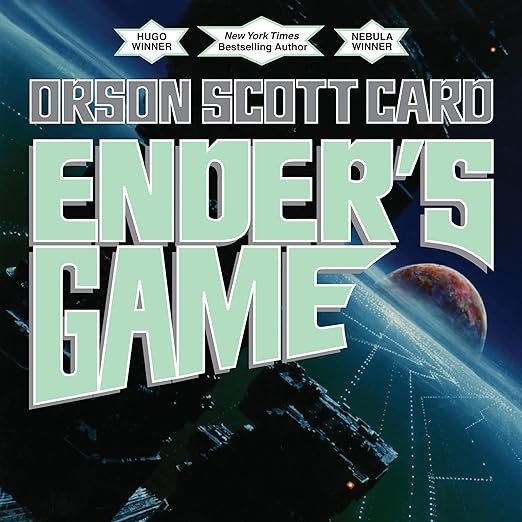
Orson Scott Card’s science fiction classic “Ender’s Game” is a complex exploration of strategy, ethics, and the nature of humanity. The 2013 film adaptation, while visually impressive, struggled to convey the depth of the novel’s themes and character development.
Why the book is better:
- The novel spends more time developing Ender’s tactical genius and psychological struggles, making his journey more compelling.
- Card’s book delves deeper into the moral implications of war and the exploitation of children, creating a richer, more thought-provoking narrative.
- The novel’s pacing allows for a more gradual and believable progression of Ender’s skills and the escalating challenges he faces.
Key differences:
- The film condenses the timeline significantly, reducing the impact of Ender’s growth and the weight of his decisions.
- The book includes substantial subplots involving Ender’s siblings on Earth, which add depth to the story’s political themes.
7. “The Time Traveler’s Wife” by Audrey Niffenegger
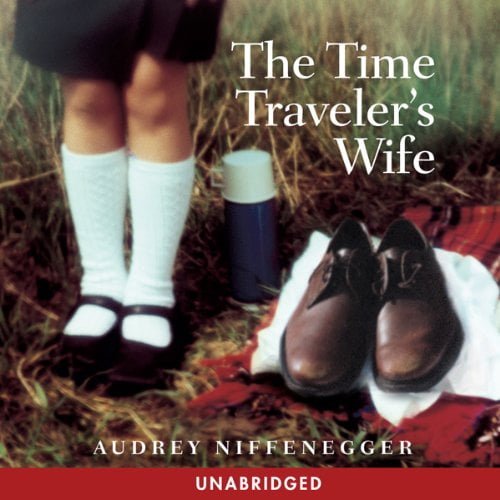
Audrey Niffenegger’s debut novel “The Time Traveler’s Wife” is a unique and touching love story that intertwines romance with science fiction. While the 2009 film adaptation had its charms, it failed to capture the intricate timeline and emotional complexity of the book.
Why the book is better:
- Niffenegger’s non-linear narrative structure creates a puzzle-like reading experience that engages the reader’s mind and heart.
- The novel explores the characters’ relationships and personal growth in greater depth, making their struggles more poignant.
- The book’s detailed exploration of the consequences and paradoxes of time travel adds richness to the story.
Key differences:
- The film simplifies the complex timeline, losing some of the novel’s unique narrative tension.
- The movie focuses more on the romance aspect, while the book balances this with deeper themes of fate, free will, and the nature of time.
8. “World War Z” by Max Brooks
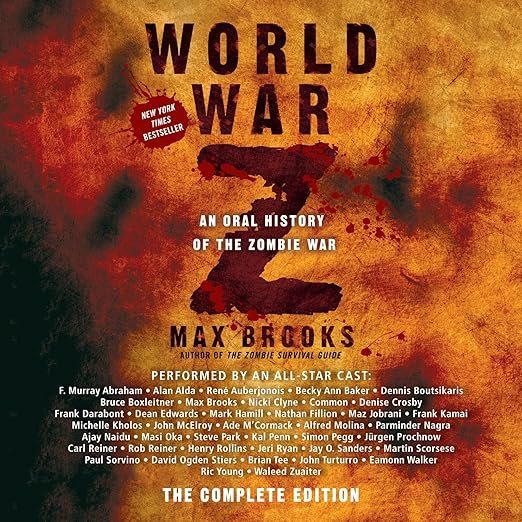
Max Brooks’ “World War Z” presents a global oral history of a zombie apocalypse, told through a series of interviews with survivors. The 2013 film adaptation, while entertaining as an action movie, bears little resemblance to the novel’s structure and depth.
Why the book is better:
- The novel’s documentary-style format provides a unique and immersive reading experience.
- Brooks’ book offers a comprehensive look at how different cultures and governments might respond to a global catastrophe.
- The novel explores complex themes of human nature, societal collapse, and rebuilding in a way the film doesn’t attempt.
Key differences:
- The movie focuses on a single protagonist and a race for a cure, while the book presents a diverse array of perspectives and experiences.
- The film emphasizes action set pieces, whereas the novel prioritizes world-building and social commentary.
9. “Fahrenheit 451” by Ray Bradbury
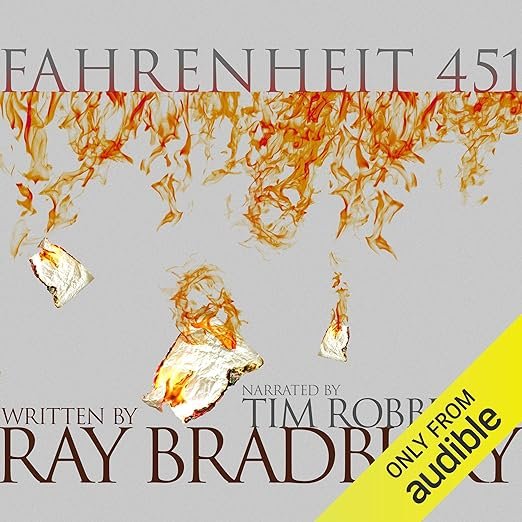
Ray Bradbury’s dystopian novel “Fahrenheit 451” is a poignant exploration of censorship and the value of literature. While there have been film adaptations, including the 2018 HBO movie, none have fully captured the poetic prose and depth of ideas present in the book.
Why the book is better:
- Bradbury’s lyrical writing style creates a vivid and haunting atmosphere that’s difficult to translate to screen.
- The novel’s exploration of the importance of books and independent thought is more nuanced and impactful in written form.
- The book allows readers to experience the protagonist’s gradual awakening and change in perspective more intimately.
Key differences:
- Film adaptations often update the technology and setting, which can detract from Bradbury’s original vision.
- The visual medium sometimes struggles to convey the internal conflict and philosophical debates that are central to the novel.
10. “The Hobbit” by J.R.R. Tolkien
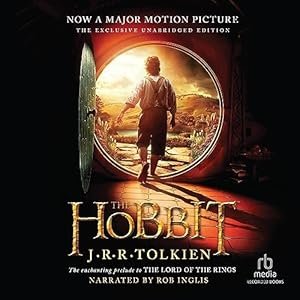
J.R.R. Tolkien’s beloved children’s novel “The Hobbit” is a charming adventure story that serves as a prelude to “The Lord of the Rings.” While Peter Jackson’s film trilogy had its merits, the decision to expand the relatively short book into three lengthy movies resulted in a product that diverged significantly from the source material.
Why the book is better:
- Tolkien’s whimsical narrative voice creates a sense of wonder and adventure perfect for the story’s tone.
- The novel’s pacing is tighter, focusing on Bilbo’s personal growth and the key events of the journey.
- The book maintains a lighter tone suitable for younger readers while still hinting at the darker themes that will be explored in “The Lord of the Rings.”
Key differences:
- The films add numerous subplots and characters not present in the original story, diluting the focus on Bilbo’s journey.
- The movies amp up the action and drama to match the epic scale of “The Lord of the Rings,” losing some of the book’s charm and simplicity.

Conclusion
While Hollywood adaptations can bring beloved stories to life in new and exciting ways, these ten books demonstrate that there’s often irreplaceable magic in the written word. The novels discussed here offer depth, nuance, and literary craftsmanship that continue to captivate readers, outshining their silver-screen counterparts.
From the lyrical prose of “The Great Gatsby” to the complex narrative structure of “Cloud Atlas,” these books showcase the unique power of literature to engage our imaginations, challenge our perceptions, and touch our hearts in ways that films sometimes struggle to match.
As we celebrate these literary triumphs, it’s worth remembering that the relationship between books and their adaptations isn’t always a competition. Often, great adaptations can inspire new readers to discover the original works, leading to a richer appreciation of both mediums. Whether you’re a die-hard bibliophile or a casual reader, these ten books offer compelling reasons to choose the page over the screen, at least some of the time.
So, the next time you’re tempted to watch a movie adaptation, consider picking up the book instead. You might just find that the original story outshines its Hollywood counterpart in ways you never expected.

